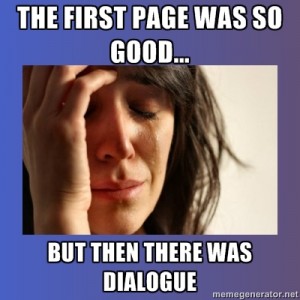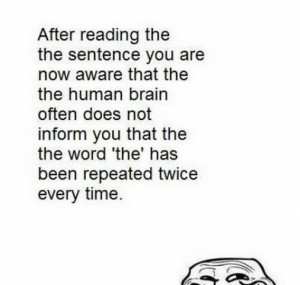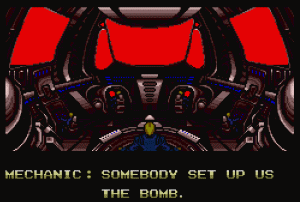 I’ve been a reader for Carve magazine for a few months now, and I’ve read hundreds of stories in a short span. Some were truly great! Most weren’t. For the ones in between, it only takes a bit of editing and attention to detail. If you’ve spent the time to craft your short fiction, you really should be spending the time to edit. That means if you finish the story the night before the contest or submission deadline, you’re going to need a good outside editor who can work quickly. You cannot edit yourself in 24 hours.
I’ve been a reader for Carve magazine for a few months now, and I’ve read hundreds of stories in a short span. Some were truly great! Most weren’t. For the ones in between, it only takes a bit of editing and attention to detail. If you’ve spent the time to craft your short fiction, you really should be spending the time to edit. That means if you finish the story the night before the contest or submission deadline, you’re going to need a good outside editor who can work quickly. You cannot edit yourself in 24 hours.
After reading your story dozens of times, focusing on character and narration and powerful dialogue, you’re going to miss things. You’re no longer looking at your work with an editorial slant. You’re going to miss words that are spelled correctly, but are the incorrect words to use, or you’ll miss too many spaces, a comma where there shouldn’t be one, or even worse, you’ll transpose characters in dialogue. Reading over these elements after having just completed your story is like correcting your taxes. Everything looks great from a few feet away. You’ve re ad and reworked it so much you no longer notice the little things. It’s fine when, on page 3, John says, “My breasts are sagging” because you’ve read it so many times you automatically insert Jill. It takes an extremely rare and talented editor to switch from writing-mode to editing-mode.
ad and reworked it so much you no longer notice the little things. It’s fine when, on page 3, John says, “My breasts are sagging” because you’ve read it so many times you automatically insert Jill. It takes an extremely rare and talented editor to switch from writing-mode to editing-mode.
To cope, you need to plan your writing a bit better. If that writing contest is in thirty days, give yourself no more than twenty to finish your story, and eight to send it out for friends to read, comment, and edit. Realistically I don’t think anybody should be writing to target a given contest. I think it’s highly likely you’ll fail. It’s far better if you have something recently completed that you can just quick-edit and submit. And if you’re writing to hit a submission deadline, likewise give yourself time. Better to skip the contest or submission altogether and try next year. You’re less likely to make mistakes.
Someone once told me that stories need to simmer. You should write them, then put them away and work on something else. Come back to that first story after you’ve given yourself enough time apart so that it feels fresh. Read it like it’s the first time you’ve ever read it, and your edits may surprise you. As an author, you clearly know what you want when you’re writing, but as a reader it’s too often we have no idea what the writer was trying to say. Those are the kinds of things you catch in a good editing session.
Now that we’ve gotten the structure out of the way, let’s talk about the other things. The “given” recommendations that get re-printed everywhere, but nobody reads them. I’ll try to keep this entertaining:
- Stick to double-spaced, Times New Roman 12-pitch, 1″ margins. Everyone in the universe accepts this, and if a journal doesn’t, it’s probably because they want it in a different language like Swahili. Did you write it in Swahili? No? Then skip that submission. If you insist on using a different font, stick to the classics – things that tend to look decent at .12 on any monitor (because just about everybody is reading on a monitor/ipad/phone nowadays), things like Arial or verdana. DO NOT use a cursive font because you think it looks cool, or a gothic font because it gives your story depth. It doesn’t. It makes it hard to read.
- DO NOT change the color of your submission. If it’s a print submission, use white paper. If it’s electronic, do not add a watermark or adjust the page to a different color. The mauve background doesn’t help convey a mood to your story, it’s more likely to make someone stop reading it. And Mauve sends me into nerd rage.
- Center the title. THAT’S IT! Make it bold if you want. Maybe make it ALL CAPS. But DO NOT under any circumstances make your title FULL SCREEN 20-POINT FONT. It does not look awesome. It looks like that high school football player who’s now pudgy and balding and still thinks he can throw a ball. The guy who screams for attention at every party where there’s any outdoor activity. “DUDE! LOOK AT ME, BRO! CHECK THIS OUT!” Do not be that guy.
- Maintain standard paragraph indents. When your manuscript has a few double-indents, or no indents, it looks sloppy because it’s something mind-numbingly easy to see, and really you should’ve caught it on edit. I’m a computer engineer by day, and nothing makes me slip into RAGEMODE more than editing some script where the developer didn’t use the tab key. Try searching through thousands of lines for the one you want to edit when they’re all bunched up on the left side of the screen like a traffic accident.
- Some will argue for two-spaces after a sentence, or just one. I’ve gotten myself in the habit of just one, and most print journals stick to that format. However, if you’re old-school and prefer two spaces, you can probably get away with it. Just be consistent. Trust me, it’s noticeable when you slip up. Can’t tell yourself? Switch Word (assuming you’re using Word) to edit mode. On the Home tab, click the funky little paragraph icon next to the style block. You’ll see either one small dot between sentences, or two. You’ll also see a whole host of other marks. My wife calls this “Headache Mode”. Do not write in headache mode…

- You (should’ve) learned language, and your writing lexicon should include some clever phrasing and synonyms. There’s absolutely no reason to use the absolutely same word in the same sentence without absolutely finding an alternative. If you’re shift-F7’ing your way through your prose, you’re probably doing something wrong. Don’t rely on a thesaurus, rely on a rewrite. Split the sentence up, phrase it differently. Use words that are impactful but precise and are rarely repeated.
- O
 K, this is a nit-pick mustard comment, but I really hate stories that start in dialogue. They rarely work for me, even published ones, even famous published ones. Here’s my logic: you’ve started in the middle, and right away you have to yank the reader back so you can explain what the hell is going on. It’s like tuning in to a TV show already in progress. Opening with the line: “Somebody set up us the bomb!” may draw out a moment of dramatic tension, but when you have to devolve the entire first page into who these people are and why they’re getting set up the bomb, then you have a problem. Perhaps I shouldn’t have chosen bad dialogue from a poorly translated Nintendo game, but the point stands. When you start with dialogue, you’re robbing your reader from any dramatic tension that would’ve evolved naturally in the course of your story. If you set the scene first before anyone actually speaks, you give the reader a hook to hang the emotional weight of being set up the bomb. Or something like that.
K, this is a nit-pick mustard comment, but I really hate stories that start in dialogue. They rarely work for me, even published ones, even famous published ones. Here’s my logic: you’ve started in the middle, and right away you have to yank the reader back so you can explain what the hell is going on. It’s like tuning in to a TV show already in progress. Opening with the line: “Somebody set up us the bomb!” may draw out a moment of dramatic tension, but when you have to devolve the entire first page into who these people are and why they’re getting set up the bomb, then you have a problem. Perhaps I shouldn’t have chosen bad dialogue from a poorly translated Nintendo game, but the point stands. When you start with dialogue, you’re robbing your reader from any dramatic tension that would’ve evolved naturally in the course of your story. If you set the scene first before anyone actually speaks, you give the reader a hook to hang the emotional weight of being set up the bomb. Or something like that. - Learn how to use Submittable (formerly submishmash). You’re probably going to be using it quite a bit in the future. Submittable is available as a centralized service (which is nice, because you can see all of your submissions in one place on one screen, and line all your rejections up in a neat little column). Alternately, many journals and universities are running their own licensed submittable system (or are using something very similar). Submitting through an online service like this should tell you a few things: First, that your submission is very likely to be read on someone’s computer screen. And second, that (usually) the readers and editors are technically savvy and will spot your inconsistencies a mile away. Nearly all versions of submittable accept three formats for your prose or poetry: Microsoft .doc files, Microsoft .docx, or .txt – if you’re not using word, DO NOT save in PDF or Ami Pro or Wordperfect or whatever. Just about every word processing package today allows you to save in .doc format. If you can’t figure it out, google it. Save your stuff in .doc, upload in .doc. Make everyone’s life easier.